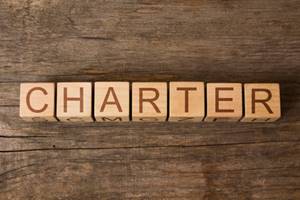What are Charter Schools?

Charter schools are a special type of public school that focus on a particular approach to education and perhaps a certain theme, such as science, technology, engineering, and math. According the National Charter School Resource Center, they operate under a "'charter,' essentially a contract entered into between the school and its authorizing agency."
Charter schools are able to operate with much more independence than a traditional public school so that they can focus on certain educational goals. They have more choice in which curricula they use, who they hire, and how they use their budgets. They are not often limited by zoning restrictions because, in many cases, they are not part of a state’s school district. So parents choose to have their students attend charter schools. The school district doesn’t require students to attend the school just because they live close to it, as is the case with other public schools.
Charter schools get their money in a different way than zoned public schools. They receive public money, and they cannot charge tuition because of this. A lottery system is used to offer available spaces to students if there are more applications to attend than spaces available.
Charter schools are under a lot of scrutiny for how well they perform. If they don’t meet the terms of their charter, they may have to close. Also, they have to follow federal laws regarding equal rights for students.
Some charter schools are networks of campuses around the country like KIPP and Uncommon Schools, and there are rural charter schools, online charter schools, and schools that may focus on native culture, like those in Hawaii.
Charter schools came about as an answer to requests and demands for other types of education around the 1970s. Charter schools were seen as an answer to increasing accountability for students’ academic achievement, using public funds appropriately, and providing solid professional development for teachers. There were almost 7,000 charter schools in the United States as of 2014, and that number had increased by six percent in the previous five years. About 2.9 million students attend charter schools in the United States.
A NCSRC report found that charter school students often perform better in math and reading, and that charter students who performed worse on achievement tests in the past do better when they are in charter schools. However, two studies have found that enrollment in a charter school made no impact on student behavior versus being in a regular public school.
Read more about the structure of charter schools on the National Charter School Center, and, when you do, also research the specifics of the charter schools in your area. Then make a visit to the charter schools you’re considering.
Author: Leyla Norman
Leyla is a certified English as a second language teacher as well as a certified PK-6 and 7-12 English teacher. She lives in Texas with her husband, and three children (The twins keep her the most busy!). She is also a freelance education writer, private English tutor, and student in a master's of Applied Linguistics -TESOL program..
Add Your Comment
Use the following form to leave your comment on this article.
